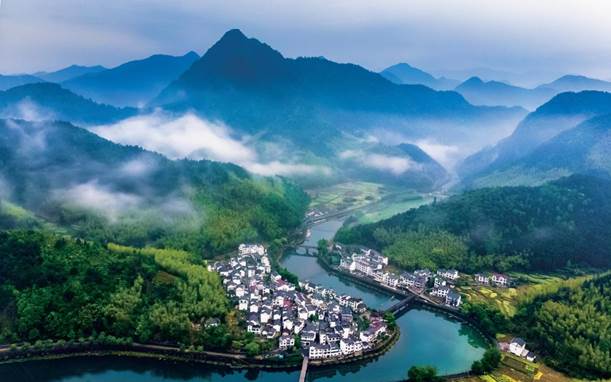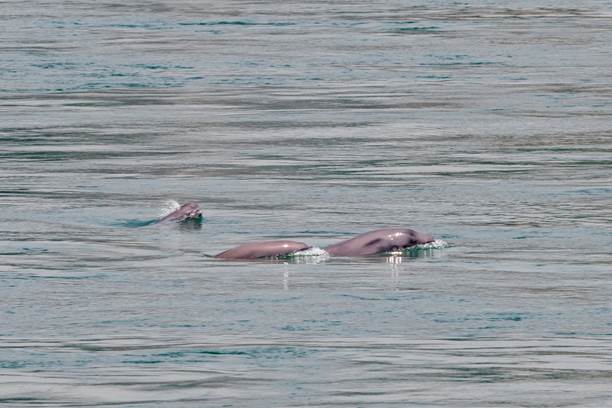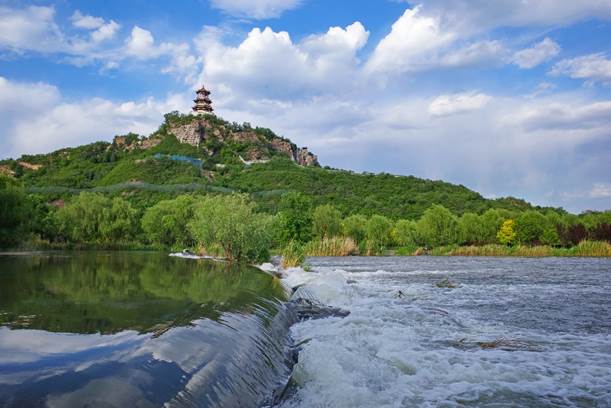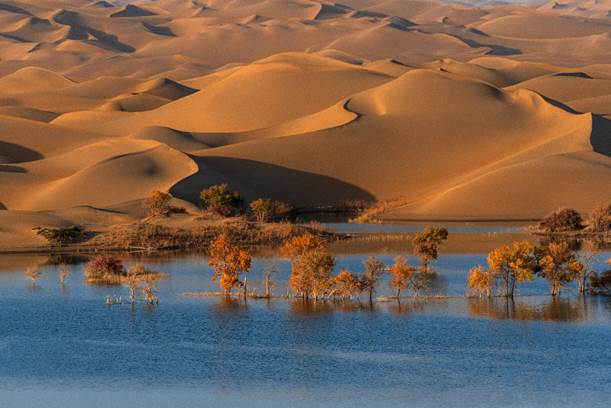Editor's Note
March 22 marks this year’s World Water Day and the start of the following China Water Week from March 22 to 28. The theme of the 2025 World Water Day, Glacier Preservation, calls on the global community to protect our planet’s precious frozen freshwater resources. To raise the awareness about this urgent mission, the United Nations has designated March 21, one day before the World Water Day, as the World Glacier Day, beginning from this year.
In celebration of the World Water Day and China Water Week, and to highlight China’s achievements in water resources development and its contributions to the global water sustainability, the Chinese government has set the theme of China Water Week 2025 as “Promoting High-quality Development in the Water Sector for National Water Security.” In response to this initiative, IWHR has published a special series of feature articles, exploring cutting-edge developments in smart dam construction, digital twin technologies, river ethics, and the National Water Network.
This series showcases the institute’s contributions to national strategies, livelihood improvement, scientific and technological advancement in the water sector, and international cooperation. It also highlights how innovations in water science and technology are shaping new productive forces and contributing to global sustainable development.
River ethics, an emerging branch of applied ethics, calls for extending the ethical concept and principles of rightful conduct to encompass human care and respect for rivers. It establishes humans’ behavioral norms to govern human-river interactions, focusing on value frameworks, moral standards, duties & obligations, and code of conduct for harmonizing these relationships. President Xi Jinping’s Ecological Civilization Thought has scientifically addressed critical theoretical and practical challenges by building river ethics, charting a clear pathway for its development. Recognized as the ideological source, fundamental principles, and guidelines to action, this philosophy anchors China’s pioneering exploration of river ethics in the new era.
Value Goals of River Ethics
Chinese President Xi Jinping points out that man and nature form a community of life. Rivers constitute an important part of nature. The “community of life between humanity and nature” has catalyzed the ethical framework of a “community of life between humans and rivers”, which establishes a new relationship between humans and rivers focusing on the interdependence of life. At the heart of river ethics lies the redefined relationship between humans and rivers, which observes the basic value of symbiotic harmony? between humans and rivers in understanding and evaluating the overall interests based on? the integrity and systemic coherence of the life community. It regards the maximized overall interests of the “community of life between humans and rivers” and maintaining the sustainable development of humans as the ultimate value goals. The vision to ?“build rivers for the common well-being”? embodies the concrete goals of ?harmonious coexistence between humans and rivers. Protecting rivers equals the preservation of their ?natural value? and increasing their natural capital, and respecting rivers aligns with the cause of sustainable development? of human society.

Chun’an County, Hangzhou City, Zhejiang Province: Xiajiang Village nestled in the Fenglingang watershed and lush mountains, presenting a living example of harmony between humans and nature [Photo from VCG]
Moral principles of river ethics
Establishing river ethics requires broad societal consensus to recognize and uphold the ?moral rights of rivers?, fostering unified concept for respectful stewardship of rivers, sustainable utilization of rivers, integrated governance of rivers, and lasting enjoyment ?of rivers.
(1) Respectful stewardship of rivers, respecting nature
Embracing the concept that humanity and nature form a unified community of life, individuals are called upon to protect rivers with the same diligence as they would protect their own sight and to value them as deeply as they value their lives. This approach necessitates the establishment of a value system that acknowledges the intrinsic life value of rivers as living entities, affirms their fundamental rights to survival and health, and promotes the adoption of an ethos of harmonious coexistence between humans and rivers.
(2) Sustainable
utilization of rivers by following the rules of nature
Development planning should prioritize the maintenance of harmony between
humans and rivers. This includes respecting the natural carrying capacity of
rivers as the foundational premise for their utilization, ensuring that all
economic activities and human social practices remain within these ecological
limits. Such an approach should aim to integrate river utilization with the
protection of the river basin ecosystems by strengthening the management of
river ethics and making efforts to transition towards a model of green
development.
(3) Sound governance of rivers for the protection of nature
By giving priority to ?ecological conservation, we should adhere to nature-based solutions that leverage rivers’ intrinsic abilities for self-adjustment, self-purification, and self-restoration. the governance of rivers has to solve the problems at the source in a systematic and comprehensive way and adopt a holistic approach for the management of the upper and lower reaches, the left and right banks, the mainstream and tributaries, both surface and ground water, and in-watercourse/off-watercourse areas. We would improve the capacity for the monitoring and prevention of natural disasters, particularly floods, and optimize the protection and governance system of the river ecosystem. By so doing, we fulfill humanity’s ?ethical duties? toward rivers and ensure the health and life of rivers.
(4) Lasting enjoyment of rivers to benefit the people
We should strengthen the notion that “a good eco-environment is a basic public good and offers most inclusive wellbeing”. Grounded in promoting ?social equity? and justice and enhancing ?public well-being?, we would work towards both intra- and inter-generational river-centric justice, provide more high-quality ecological products, and enhance people’s sense of gain, joy, and security. By this way, we can constantly better the well-being and utmost good of human beings.
Respectful stewardship of rivers
· Regard rivers as living entities.
· Protect rivers with the same diligence as safeguarding our own life
Sustainable utilization of rivers
· Confine economic activities and human behaviors within the carrying capacity of river ecosystems
Sound governance of rivers
· Respect nature and act in the course of nature
· Observe principles of ?systematic, integrated, and source-focused governance?
Lasting enjoyment of rivers
· Inclusive enhancement of public well-being?
· Balance between intragenerational and intergenerational equity
Code of Conduct for River Ethics?
China’s President Xi has pointed out that ?“we must shift our mindset from altering and conquering nature to adjusting human behavior and correcting mistakes when building an ecological civilization”.? Developing ?conduct norms aligned with river ethics? constitutes a vital component in establishing ?river ethics as a governance paradigm.
(1) Policymakers?
Policymakers? should incorporate the normative requirements of river ethics into the whole process of formulating and implementing laws, strategies, plans, standards and policies, and coordinate economic development and the health and life of rivers.
For example, China has ?enshrined ecological civilization in its Constitution?, enacted basin-specific laws such as the Yangtze River Protection Law and the Yellow River Protection Law, formulated national strategies including the Yangtze River Economic Belt Development Strategy and the Yellow River Basin Ecological Conservation and High-Quality Development Strategy, developed ?basin-wide integrated plans?, water resource management plans, flood control plans, and institutionalized governance mechanisms such as the ?River Chief System? and ?Lake Chief System in an all-round way?. These measures collectively strengthen river protection and governance through ?institutional, regulatory, and legal frameworks?.

? Yichang City, Hubei Province: A Yangtze finless porpoise family of three [Photo from VCG]
(2) Watershed
managers
?
As the guardians and advocates of river health and life, watershed managers
bear the primary responsibility for recognizing and disseminating river ethics.
They need to maintain inter-departmental collaboration in order to create and
maintain healthy and stable river ecosystems.
For example, China has established ?river basin authorities? across seven major river basins, including the Yangtze and Yellow Rivers, to strengthen ?unified planning, governance, dispatching, and management?. Remarkable outcomes include: The Yangtze River has regained its ?“pristine waters flowing eastward”?; the Yellow River has achieved ?25 consecutive years without flow interruption?; the Beijing-Hangzhou Grand Canal restored ?full water connectivity? for the first time in a century; rivers like the Yongding River, which had been dry for decades, have resumed ?year-round flow. These efforts have realized ?historic restoration of river and lake ecosystems?, revitalizing countless rivers and rejuvenating countless river basins.

Shijingshan District, Beijing City: The lush banks of the Yongding River have become a popular recreational spot for nearby residents [Photo from VCG]
(3) The Public
The public is not only a major participant in river protection and governance but also a direct beneficiary of healthy waters. It is imperative to ?cultivate a value system that respects rivers’ rights to existence and health? and to ?adhere to lifestyles and production modes characterized by simplicity, moderation, green and low-carbon practices, and civilized social etiquette?.
For example, China has implemented its ?National Water Conservation Action?, mobilizing broad societal participation in water-saving initiatives. The measures have improved agricultural water efficiency?, reduced industrial water consumption and emissions?, and lowered the urban water loss?, fostering a societal ethos of cherishing and conserving water resources?. These efforts have ?elevated the capacity for intensive and efficient water resource utilization?, achieving ?“zero growth” in total national water consumption over the past decade, even as the country’s GDP has nearly doubled.

Taklamakan Desert, Bayingolin Mongol Autonomous Prefecture, Xinjiang Uyghur Autonomous Region: The once withered Taitema Lake is replenished with water year-round, effectively curbing the merging trend of the Taklamakan and Kuruktag deserts. [Photo from VCG]